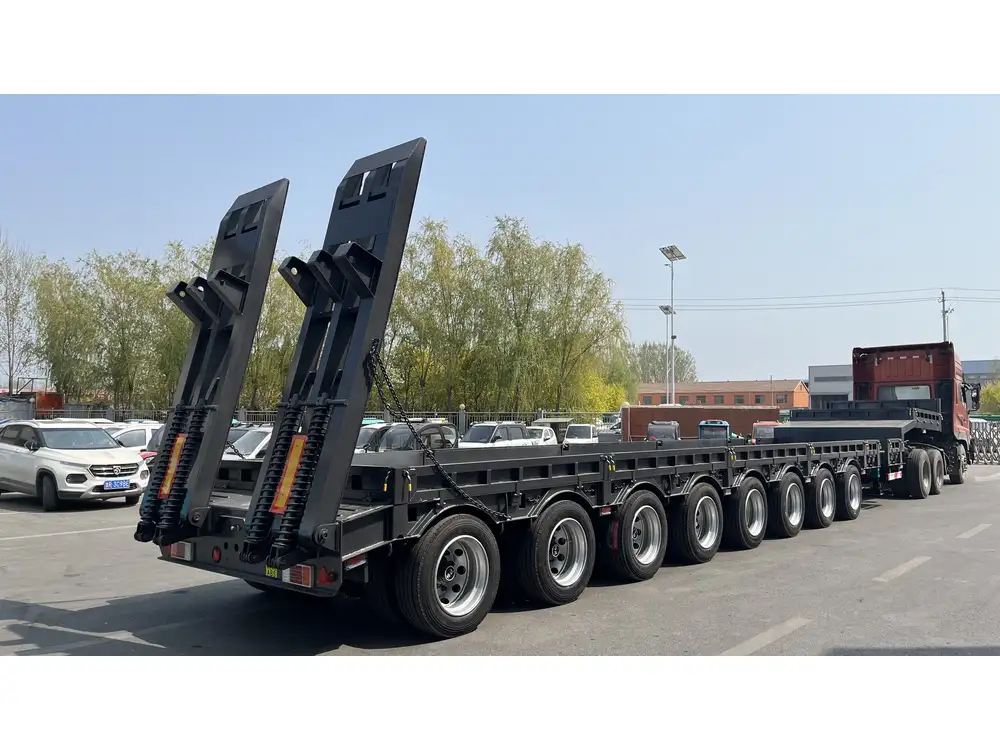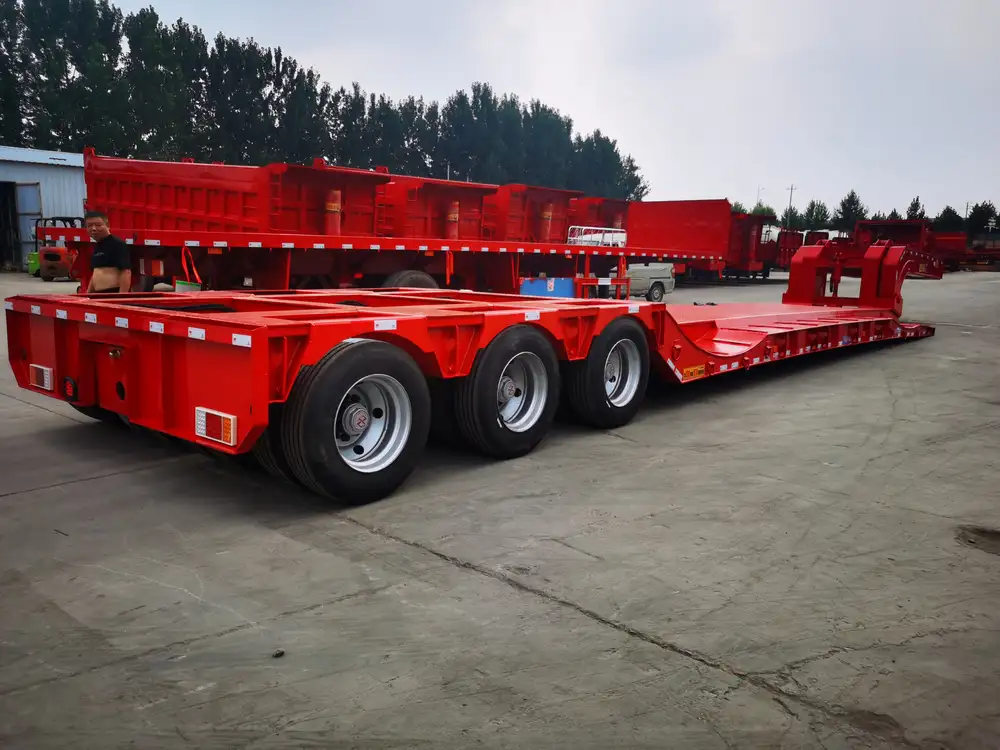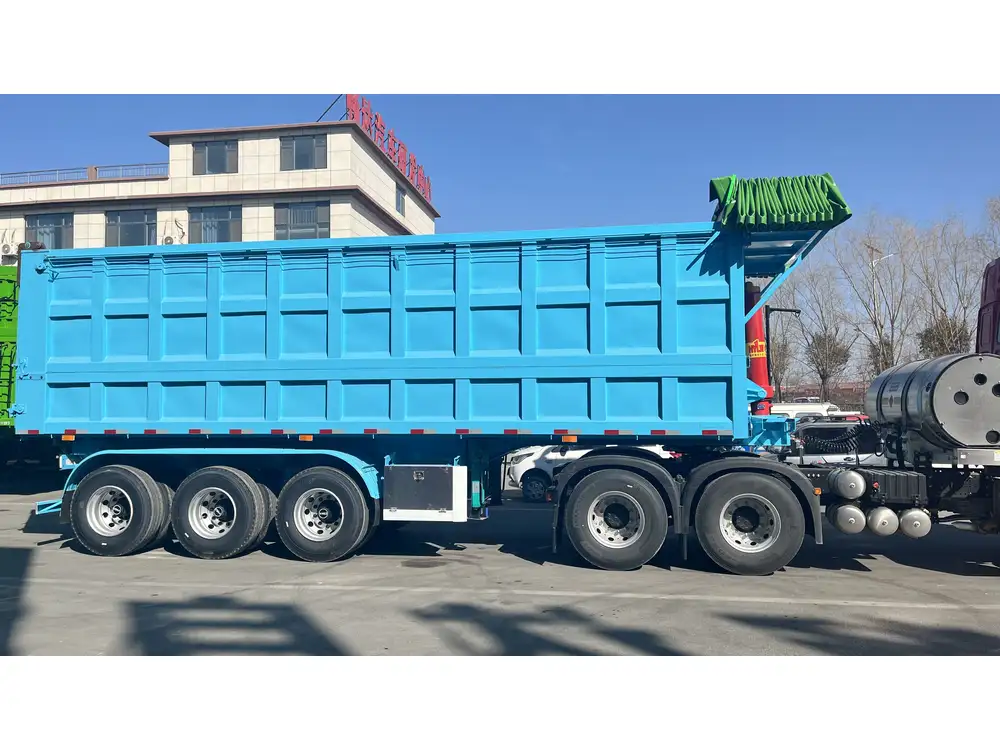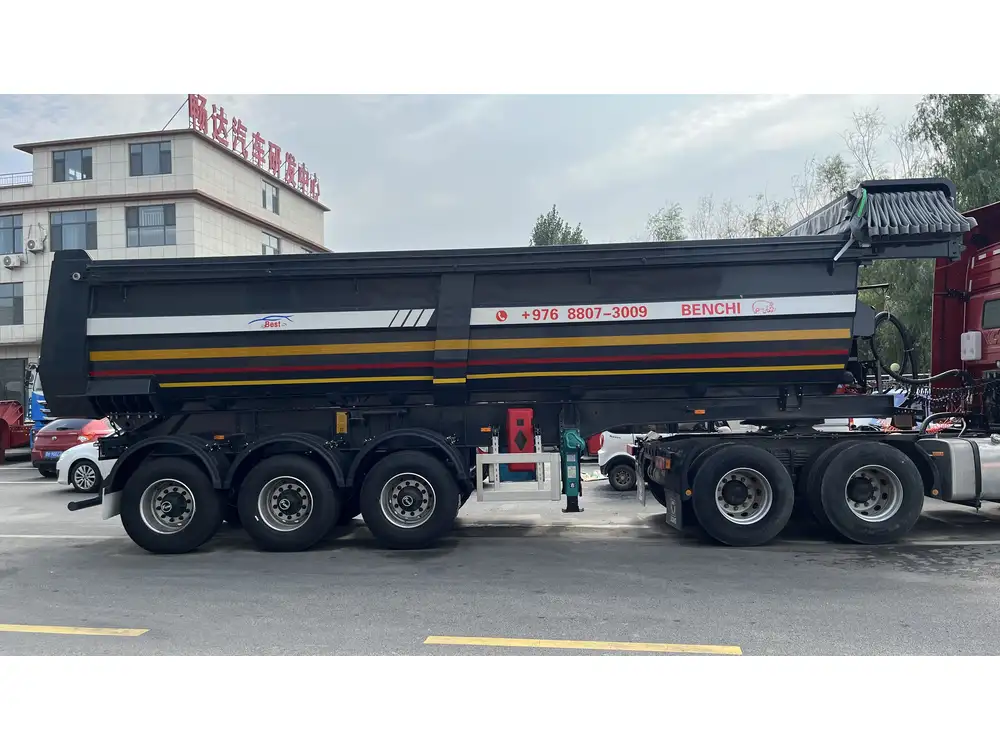Crude oil transportation is a critical component of the global energy infrastructure, ensuring that raw materials reach refineries and ultimately supply consumers worldwide. At the heart of this process are crude oil tankers—specialized vehicles designed to safely and efficiently transport large volumes of petroleum products. In this comprehensive guide, CarMax Vehicle delves into the fundamentals of crude oil tankers, providing essential insights for industry professionals and enthusiasts alike.
Table of Contents
- Understanding Crude Oil Tankers
- Types of Crude Oil Tankers
- Key Components of a Crude Oil Tanker
- Operation Procedures
- Safety and Environmental Considerations
- Maintenance Practices
- Innovations in Crude Oil Tanker Design
- Why Choose CarMax Trailer for Crude Oil Transportation
- Conclusion
- Frequently Asked Questions
Understanding Crude Oil Tankers
Crude oil tankers, often referred to as tanker trucks, are specialized vehicles designed to transport liquid petroleum products such as crude oil, gasoline, diesel, and other fuels. These tankers are engineered to handle the volatile nature of petroleum, ensuring safe and efficient delivery from extraction sites to refineries and distribution centers.

Importance in the Energy Supply Chain
Crude oil tankers play a pivotal role in the energy supply chain by:
- Ensuring Timely Delivery: Facilitating the movement of large volumes of crude oil across regions.
- Maintaining Product Integrity: Preventing contamination and loss during transportation.
- Supporting Economic Stability: Enabling the steady flow of energy resources essential for various industries.
Types of Crude Oil Tankers
Crude oil tankers vary based on size, design, and intended use. Understanding these variations is crucial for selecting the appropriate tanker for specific transportation needs.
Based on Size
| Type | Capacity (Barrels) | Typical Use |
|---|---|---|
| Small Tankers | Up to 5,000 | Short-distance transport, local distribution |
| Medium Tankers | 5,000 – 20,000 | Regional transportation |
| Large Tankers | 20,000 – 100,000 | Long-haul and international shipping |

Based on Design
| Design Type | Description | Advantages |
|---|---|---|
| Single-Hull | Tanker with one layer of material separating cargo from the environment | Simpler construction, lower initial cost |
| Double-Hull | Tanker with two layers of material for enhanced protection against leaks | Increased safety, reduced environmental risk |
Key Components of a Crude Oil Tanker
A crude oil tanker comprises various components that work in tandem to ensure safe and efficient transportation. Understanding these components is essential for proper operation and maintenance.
Tank Design
The tank is the heart of the tanker, designed to hold and transport crude oil securely.
- Material: Typically constructed from high-grade steel resistant to corrosion and compatible with petroleum products.
- Shape: Cylindrical or rectangular, optimizing space and stability during transit.
- Insulation: Prevents temperature fluctuations that could affect the cargo.

Pump Systems
Pump systems facilitate the loading and unloading of crude oil, ensuring smooth transitions.
- Primary Pumps: Handle the bulk movement of oil into and out of the tanker.
- Secondary Pumps: Manage smaller flows and assist in maintaining pressure levels.
- Safety Pumps: Act as backups in case of primary pump failure.
Safety Features
Safety is paramount in crude oil transportation. Modern tankers incorporate several safety features:
- Automatic Shutoff Valves: Prevent spillage in case of system failures.
- Emergency Venting Systems: Release excess pressure to avoid tank rupture.
- Fire Suppression Systems: Extinguish fires promptly to minimize damage.
Operation Procedures
Efficient operation of crude oil tankers involves meticulous planning and adherence to protocols to ensure safety and compliance with regulations.

Loading and Unloading
Effective loading and unloading processes are critical to prevent accidents and ensure timely delivery.
- Pre-Operation Checks:
- Inspect tanker integrity.
- Verify pump functionality.
- Loading Process:
- Connect to source using appropriate hoses.
- Monitor flow rates to avoid overflows.
- Ensure secure sealing to prevent leaks.
- Unloading Process:
- Align tanker with receiving facility.
- Gradually release oil, monitoring for spillage.
- Disconnect hoses and perform final inspections.
Transportation Regulations
Compliance with national and international regulations is mandatory to operate crude oil tankers.
- Permits and Licensing: Secure necessary authorizations for transportation.
- Route Planning: Adhere to designated routes to minimize risks.
- Documentation: Maintain accurate records of cargo, routes, and maintenance.
Safety and Environmental Considerations
The transportation of crude oil poses significant safety and environmental risks. Implementing robust safety measures is essential to mitigate these risks.

Spill Prevention
Preventing spills is a top priority to protect ecosystems and public safety.
- Regular Maintenance: Ensure all components are in optimal condition.
- Training Programs: Educate operators on best practices and emergency responses.
- Monitoring Systems: Utilize sensors to detect leaks or irregularities promptly.
Regulations and Standards
Adhering to stringent regulations helps maintain safety and environmental standards.
- Environmental Protection Agency (EPA): Enforces guidelines to prevent pollution.
- Occupational Safety and Health Administration (OSHA): Sets standards for worker safety.
- International Maritime Organization (IMO): Provides global standards for tanker operations.
Maintenance Practices
Regular maintenance is crucial to extend the lifespan of crude oil tankers and ensure their safe operation.

Regular Inspections
Routine inspections identify potential issues before they escalate.
- Daily Checks: Monitor for visible leaks, unusual noises, or vibrations.
- Weekly Inspections: Examine pump systems, valves, and safety features.
- Monthly Audits: Conduct comprehensive reviews of structural integrity and functionality.
Cleaning Procedures
Proper cleaning prevents contamination and corrosion, maintaining the tanker’s efficiency.
- Internal Cleaning: Use specialized solvents to remove residual oil.
- External Cleaning: Keep the exterior free from dirt and debris to prevent corrosion.
- Tank Washing: Ensure thorough cleaning between different cargoes to avoid cross-contamination.
Innovations in Crude Oil Tanker Design
Advancements in technology and materials have led to significant improvements in crude oil tanker design, enhancing safety, efficiency, and environmental performance.

Advanced Materials
Utilizing cutting-edge materials enhances durability and performance.
- Composite Materials: Offer lightweight yet strong alternatives to traditional metals.
- Corrosion-Resistant Alloys: Extend the lifespan of tankers by preventing rust and degradation.
- Insulated Materials: Maintain optimal cargo temperatures, improving product quality.
Automation and Monitoring Systems
Automation streamlines operations and enhances safety through real-time monitoring.
- Automated Control Systems: Manage pump operations, flow rates, and valve controls with precision.
- GPS Tracking: Provides real-time location data for better route management.
- Sensors and IoT Devices: Monitor tank pressure, temperature, and leak detection, enabling proactive maintenance and rapid response to issues.
Why Choose CarMax Trailer for Crude Oil Transportation
CarMax Vehicle, through its CarMax Trailer line, stands out as a premier manufacturer of crude oil tankers, offering unparalleled quality and innovation.

Superior Build Quality
- Robust Construction: Ensures durability and longevity even under the harshest conditions.
- Precision Engineering: Guarantees optimal performance and efficiency in every tanker.
Advanced Safety Features
- Comprehensive Safety Systems: Incorporate the latest technologies to safeguard cargo and operators.
- Compliance Assurance: Designed to meet and exceed all regulatory standards, providing peace of mind to clients.
Customization and Flexibility
- Tailored Solutions: Customize tanker designs to meet specific transportation needs.
- Scalable Options: Offer a range of sizes and configurations to accommodate varying volumes and routes.

Exceptional Support and Service
- Expert Consultation: Provide professional guidance to help clients choose the right tanker solutions.
- After-Sales Support: Ensure ongoing maintenance and support to maximize tanker performance and lifespan.
Conclusion
Crude oil tankers are indispensable in the global energy landscape, facilitating the seamless transport of vital petroleum products. Understanding the basics—from types and components to operations and innovations—is essential for anyone involved in or interested in the field. CarMax Vehicle, with its CarMax Trailer line, exemplifies excellence in manufacturing robust, safe, and efficient crude oil tankers, driving the industry forward with innovation and reliability.
Frequently Asked Questions

1. What distinguishes a crude oil tanker from other types of tanker trucks?
Crude oil tankers are specifically designed to handle the transportation of raw petroleum products. They feature specialized tank designs, safety systems, and materials resistant to the corrosive nature of crude oil, distinguishing them from tankers used for other liquids like chemicals or food-grade products.
2. How does a double-hull design enhance the safety of crude oil tankers?
A double-hull design incorporates two layers of material, providing an additional barrier against leaks and spills. This design significantly reduces the risk of environmental contamination in case of accidental breaches, making it a preferred choice for enhancing safety in crude oil transportation.
3. What maintenance practices are essential for ensuring the longevity of a crude oil tanker?
Essential maintenance practices include regular inspections to identify and address potential issues, routine cleaning to prevent contamination and corrosion, and timely repairs of any damaged components. Adhering to a strict maintenance schedule ensures the tanker’s optimal performance and extends its operational lifespan.

4. How do automation and monitoring systems contribute to the efficiency of crude oil tankers?
Automation and monitoring systems streamline operations by managing critical functions such as pump operations and flow rates with precision. Real-time monitoring through sensors and IoT devices allows for proactive maintenance and rapid response to any irregularities, enhancing both efficiency and safety.
5. Why should I choose CarMax Trailer for my crude oil transportation needs?
Choosing CarMax Trailer means partnering with a manufacturer committed to quality, safety, and innovation. CarMax Trailers are built with superior materials, advanced safety features, and customizable options to meet diverse transportation requirements. Combined with exceptional support and service, CarMax Trailer ensures reliable and efficient crude oil transportation solutions.



